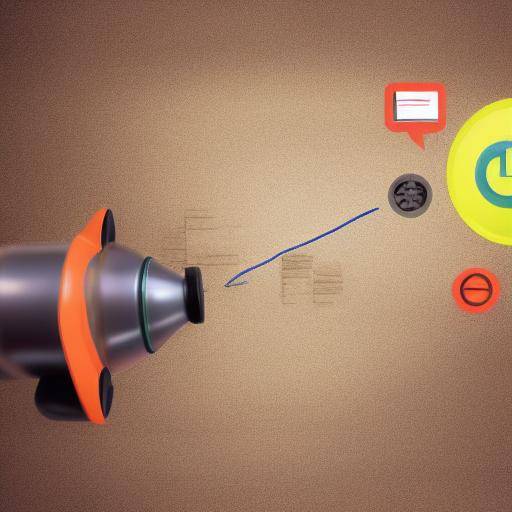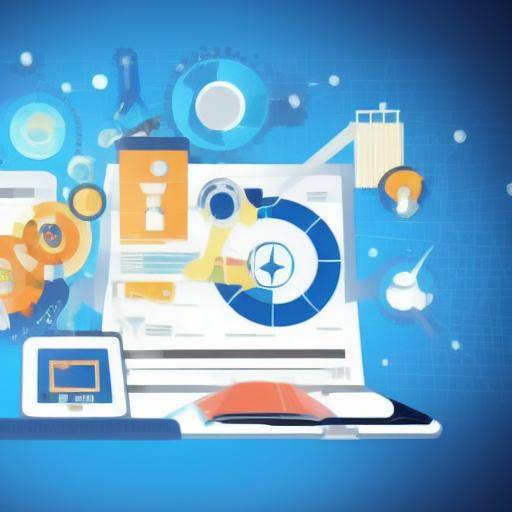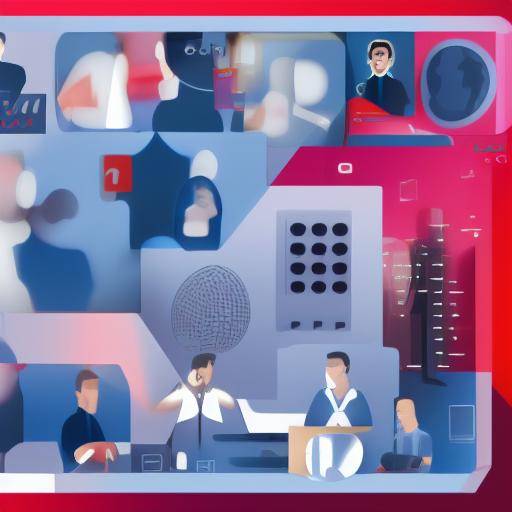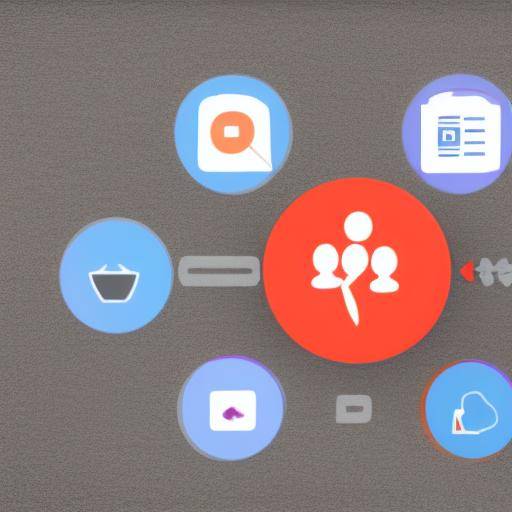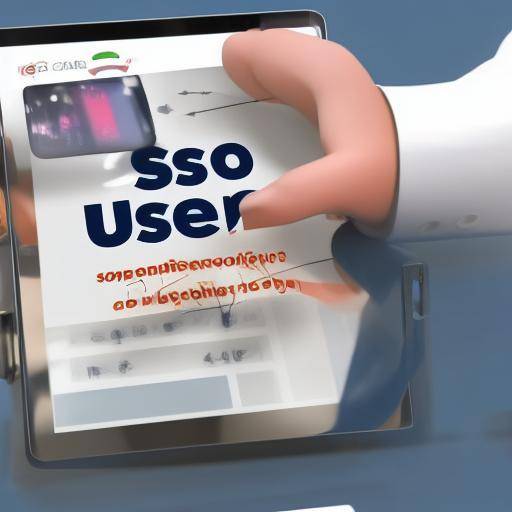
Remote work has become a growing trend today, and with it, the need to find effective ways to keep productivity in a digital environment. Using digital tools can make the difference between efficient work performance and a chaotic work process. In this article, we will show you how to use digital tools to optimize your productivity in remote work, as well as the benefits that these tools can bring to your work routine.
Introduction
In the digital era, technological tools have become fundamental allies to improve productivity in remote work. Access to applications that facilitate communication, task management and collaboration has revolutionized the way in which companies and professionals carry out their daily activities. In this article we will explore in detail the impact of digital tools on remote productivity, as well as best practices for implementation.
History and background
Digital tools are not a recent invention, but they have their roots in technological development in recent decades. Since the creation of the first task management systems to the emergence of real-time collaboration platforms, digital tools have evolved significantly. This section will address the most relevant milestones in the development of these instruments, as well as their impact on the workplace.
The emergence of the first digital tools dates back to the 1980s, when personal computers began to be popular in working environments. At that time, text-processing applications and spreadsheets represented a significant advance in information management and the automation of administrative tasks.
Over time, online connectivity allowed the development of communication tools, such as e-mail and instant messaging systems, which revolutionized the way work teams interacted remotely. Subsequently, the emergence of cloud collaborative project management platforms and tools led to remote productivity at a new level.
The continuous evolution of digital tools has been marked by advances in artificial intelligence, automatic learning and the integration of more intuitive interfaces, which has further facilitated the management of work in remote environments. These technological advances have allowed professionals to access an increasingly wide range of solutions to optimize their productivity, regardless of their geographical location.
In-depth analysis
The use of digital tools in distance work entails a number of significant benefits for professionals and organizations. Real-time collaboration capabilities, efficient task management and access to information from anywhere are just some of the advantages offered by these tools.
Maintaining high productivity levels in a remote working environment also presents unique challenges. Time management, effective communication and coordination of activities are key aspects that may be affected by physical distance between team members. In this section we will discuss in detail the benefits and challenges associated with the use of digital tools in the context of remote work.
According to a recent study, 87 per cent of remote workers consider digital tools to have improved their daily productivity. This improvement is largely attributed to the possibility of agile access to relevant information, as well as the ability to collaborate with colleagues efficiently, even remotely. These tools have also proven to reduce response times in internal communication, which translates into greater agility in decision-making.
On the other hand, the management of the workload and the disconnection of the working environment are common challenges for those who perform their distance work. The lack of separation between personal and work life can result in overloading of tasks, as well as difficulties in disconnecting and resting properly. Despite these challenges, digital tools offer functionalities that can help mitigate these negative aspects, such as programming smart tasks and establishing clear limits between work and personal time.
Comprehensive review
By exploring the use of digital tools to improve productivity in remote work, it is essential to consider a variety of applications and approaches to optimize task management and communication in remote environments. From platforms specialized in project management to videoconferencing tools, there is a wide range of solutions specifically designed to meet the needs of remote equipment.
A key aspect in the successful application of digital tools lies in the ability to adapt these solutions to the specific needs of each team and project. Flexibility and customization of tools can make the difference in terms of efficiency and satisfaction of the work team. In this section, we will explore different applications and use cases that demonstrate how digital tools can be effectively implemented in remote working environments.
Comparative analysis
Digital tools designed to improve productivity in remote work can be classified into different categories according to their functionality and purpose. From task and project management tools to online video conferencing and collaboration platforms, each type of tool offers particular advantages that adapt to different work scenarios. In this section we will perform a comparative analysis of the main categories of digital tools, highlighting their key features and their impact on remote productivity.
Accessible practical advice and advice
By implementing digital tools to improve productivity in remote work, it is crucial to have a clear and effective strategy. Using these tools optimally not only involves mastering their technical functioning, but also understanding how to integrate them into the daily work processes for the maximum benefit. In this section, we offer practical advice and actions that professionals can implement to maximize digital tools in their remote work.
Effective communication:
Establishing clear channels of communication, availability times and encouraging the active participation of the entire team in messaging and videoconferencing platforms can contribute significantly to improving coordination and collaboration in a remote environment.
Task and time management:
Using tasks management and time tracking applications can help maintain effective control over daily activities, prioritize and optimize individual and collective performance.
Tool integration:
Finding the integration between different digital tools, such as combining a project management platform with a videoconference application, can facilitate the practical execution of tasks and optimize collaboration among team members.
Conclusions and FAQs
Conclusions
The use of digital tools to improve productivity in distance work today represents an invaluable opportunity for professionals and organizations. Through the strategic implementation of these instruments, it is possible to optimize remote labour management, promote effective collaboration and facilitate task coordination, resulting in a significant increase in labour efficiency.
Frequently asked questions
What digital tools are most recommended for project management in remote environments?
There are various tools specialized in managing remote projects, such as Trello, Asana or Jira, which offer specific functionalities to coordinate activities, assign tasks and follow progress collaboratively.
How to ensure information security using digital tools in remote environments?
Information security is a critical aspect of using digital tools in remote environments. It is essential to choose tools that meet the relevant security and encryption standards, as well as to implement good practices in password management and access to confidential information.
What measures can be taken to avoid overloading tasks by working away?
In order to avoid overloading tasks by working distance, it is advisable to establish defined working hours, establish clear limits between work and personal life, as well as use time management tools that allow for an equitable distribution of tasks throughout the day.
How to encourage team motivation and commitment in a remote working environment?
The promotion of the motivation and commitment of the team in a remote working environment can be achieved through regular meetings, the implementation of recognitions and awards for achievements and the establishment of open and effective information channels.
What are the emerging trends of digital tools for remote work?
New trends in digital tools for remote work include the use of virtual reality platforms for remote collaboration, the integration of artificial intelligence in task management and the automation of routine processes, as well as the development of tools for monitoring and monitoring individual and collective productivity.
Is it necessary to have advanced technical skills to use digital tools in remote work?
Although certain digital tools may require a basic level of technical knowledge, most of them are designed to be intuitive and easy to use. In addition, there are online training resources that can help professionals acquire the skills they need to make the most of these tools.
How to select the most suitable digital tools for the needs and work processes of my remote computer?
The selection of the most appropriate digital tools for the needs and work processes of a remote equipment requires a detailed assessment of the specific functionalities required, as well as a review of integration with existing instruments and the ease of adoption by team members.
In short, the effective use of digital tools to improve productivity in remote work has become a vital aspect in the current working environment. By understanding the functionalities, benefits and challenges associated with these instruments, as well as by implementing practical strategies for their use, professionals can optimize their work processes and develop more efficient and collaborative working environments.














